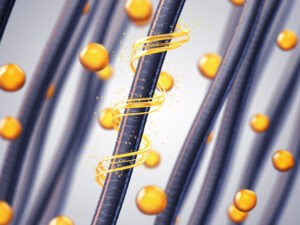
Hair loss is a widespread concern that affects many individuals and can significantly impact self-image. Both men and women suffer from it for various reasons, including genetics, stress, and hormonal fluctuations. In response to this challenge, several treatments have emerged. Among the most notable are Finasteride and Nutrafol, each catering to distinct needs and preferences, yet both aim to enhance hair growth and reduce hair loss.
What is Finasteride?
Finasteride is a prescription medication approved by the FDA specifically for the treatment of male pattern baldness, clinically referred to as androgenetic alopecia. This type of hair loss primarily targets men as they age, prompting many to seek effective solutions.
How It Works:
Finasteride operates by inhibiting the enzyme 5-alpha-reductase, which converts testosterone into dihydrotestosterone (DHT). Excessive DHT levels can cause hair follicles to shrink, resulting in thinning hair and eventual hair loss. By lowering DHT levels, Finasteride helps safeguard hair follicles, allowing them to maintain their health and function for a longer duration.
Benefits:
The advantages of using Finasteride are numerous. Clinical research indicates that it can significantly slow hair loss progression in men. Not only does it prevent further hair loss, but it also fosters hair regrowth for many users. Consistent usage can lead to thicker, fuller hair, enhancing overall appearance and boosting confidence.
Ideal Candidates:
Finasteride is particularly suitable for men witnessing male pattern baldness. Those who observe thinning on the crown or receding hairline might find Finasteride an appropriate choice. However, it’s crucial to consult a healthcare professional to ascertain if this medication aligns with individual health needs and conditions.
What is Nutrafol?
Nutrafol distinguishes itself as an over-the-counter dietary supplement, eliminating the need for a prescription. Composed of a unique blend of natural ingredients, Nutrafol appeals to those seeking holistic approaches to enhance hair growth from within.
How It Works:
Nutrafol emphasizes a multifaceted approach to hair health, incorporating essential vitamins, minerals, and beneficial plant extracts. These components address various factors like stress, hormonal imbalances, and nutrient deficiencies that can hinder hair growth. For instance, stress can provoke hair shedding, while lack of nutrients can weaken hair strands. By tackling these underlying issues, Nutrafol aims to foster an optimal environment for hair to flourish.
Benefits:
Nutrafol presents a variety of benefits for users. Many report noticeable improvements in hair thickness and resilience after regular usage. Stronger hair strands are less susceptible to breakage, enhancing overall hair quality. Furthermore, Nutrafol can contribute to enhanced hair vitality, making it appear shinier and more robust. This makes it an attractive option for individuals preferring a natural supplement over medication.
Ideal Candidates:
In contrast to Finasteride, Nutrafol is suitable for both men and women. People of all ages can consider this product if they aim to foster better hair health. It can be particularly advantageous for those seeking natural remedies to improve hair growth, especially for individuals facing hair thinning linked to stress or hormonal changes.
In conclusion, both Finasteride and Nutrafol provide distinct pathways to address hair loss. Finasteride offers a medical solution centered on reducing DHT levels, targeting men with male pattern baldness. Conversely, Nutrafol adopts a holistic strategy, integrating vitamins and botanical extracts to boost overall hair health for everyone. Recognizing these differences can help individuals make informed choices about the potential solutions that suit their needs.
Key Differences Between Finasteride and Nutrafol
When it comes to treatment options for hair loss, two popular names often come up: Finasteride and Nutrafol. While both aim to improve hair health, they function in very different ways and are suited to different situations. Understanding these differences can help individuals make informed decisions about which option might be best for them.
Type of Treatment
Firstly, the type of treatment these options provide is quite distinct. Finasteride is a prescription medication that you can only get from a healthcare provider. It requires medical supervision due to its specific effects and potential side effects. On the other hand, Nutrafol is classified as a nutritional supplement. This means you can purchase it without needing a prescription. For people looking for an easy access option, Nutrafol may seem more appealing.
Mechanism of Action
The way each treatment works is another key difference. Finasteride focuses primarily on reducing levels of dihydrotestosterone (DHT) in the body. DHT is a hormone that can cause hair follicle miniaturization, leading to hair loss—especially in men. When taken, Finasteride directly targets this hormone to help prevent further loss and may even promote hair regrowth.
In contrast, Nutrafol takes a broader approach. Instead of targeting DHT alone, it aims to address several factors that contribute to hair loss. These include stress, poor nutrition, and other environmental impacts. Nutrafol contains a mix of ingredients that support overall hair health, attacking the problem from multiple angles rather than focusing on a single issue.
Effectiveness
Effectiveness is a crucial concern for anyone considering these treatments. Finasteride has been clinically proven to help reduce hair loss and encourage regrowth in men dealing with male pattern baldness. Many studies have shown its efficacy over time, leading to established trust among users and healthcare professionals alike.
On the flip side, Nutrafol’s effectiveness remains less straightforward. While many users report positive changes in their hair quality, studies on Nutrafol are not as extensive. Some people may notice improvements, but results can vary widely from person to person. This uncertainty can make it less appealing for those specifically seeking significant hair regrowth.
Side Effects
When opting for any treatment, side effects are always a concern. Finasteride can cause sexual side effects in some individuals. These might include decreased libido or erectile dysfunction, which can be bothersome for those affected. Because of these risks, it’s essential for patients to engage in open discussions with their healthcare providers before starting Finasteride.
In comparison, Nutrafol is generally well-tolerated by users. While there may be some instances of allergic reactions to certain herbal ingredients, the overall report of side effects is relatively low. This can make Nutrafol an attractive choice for those who are particularly concerned about possible side effects.
Usage
The way these two treatments are used also diverges significantly. Finasteride is typically taken as a single daily oral dose. Consistent use is necessary to continue seeing benefits, as stopping the medication can lead to a return of hair loss. This requirement might be seen as a commitment that some users are willing to make, especially given the medication’s proven results.
Nutrafol, on the other hand, is taken in capsule form once daily. Although it can also be part of a long-term regimen, it’s generally viewed as part of a wellness approach to maintain hair health rather than a specific treatment aiming solely for regrowth. This might appeal to individuals looking for an easy addition to their daily routine without feeling tied down by strict medication adherence.
Gender Suitability
Lastly, one must consider the suitability of these options for different genders. Finasteride is intended specifically for men. Women, particularly those who are pregnant or may become pregnant, are strongly advised against using it due to potential risks to fetal development. This makes Finasteride less versatile in terms of who can safely use it.
Conversely, Nutrafol is designed to be suitable for both men and women. There are formulations available that cater specifically to the unique needs of each gender. This inclusivity may make Nutrafol a better choice for anyone looking for a gender-neutral option.
In summary, Finasteride is a medically-based treatment specifically for hair loss that boasts clinically supported results, whereas Nutrafol offers a wider approach as a nutritional supplement aimed at improving overall hair health. When choosing between these two, it’s essential to consider personal needs and health history. Consulting with a healthcare professional is encouraged to explore which option aligns best with individual circumstances.

